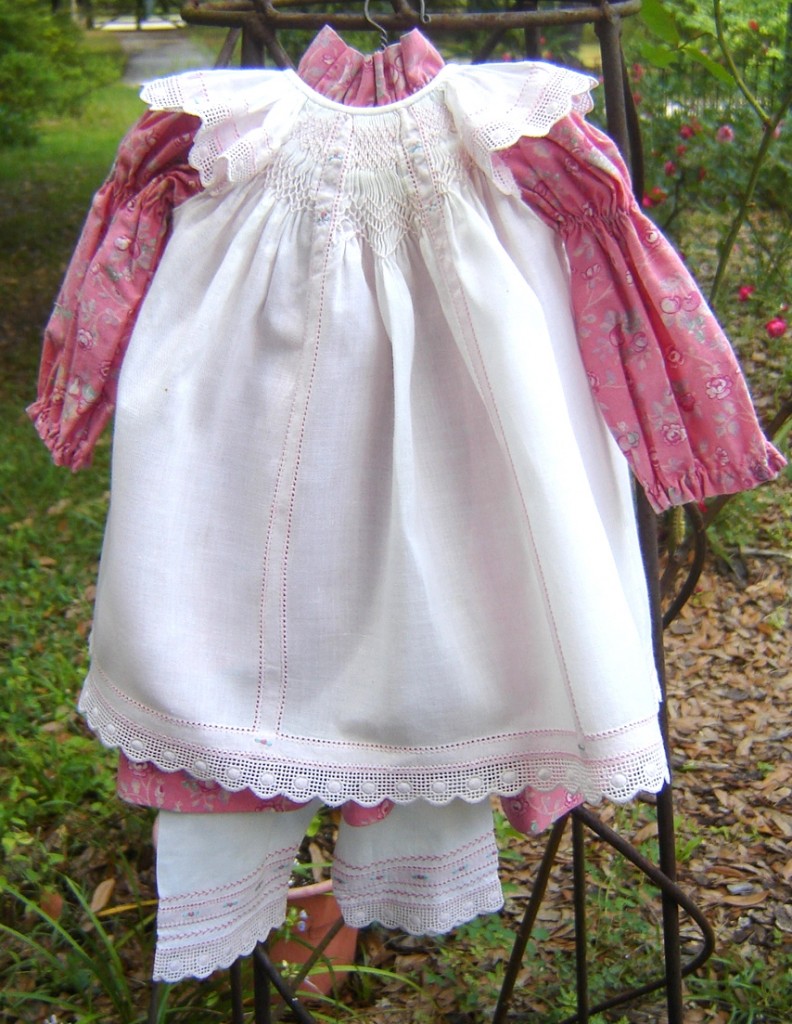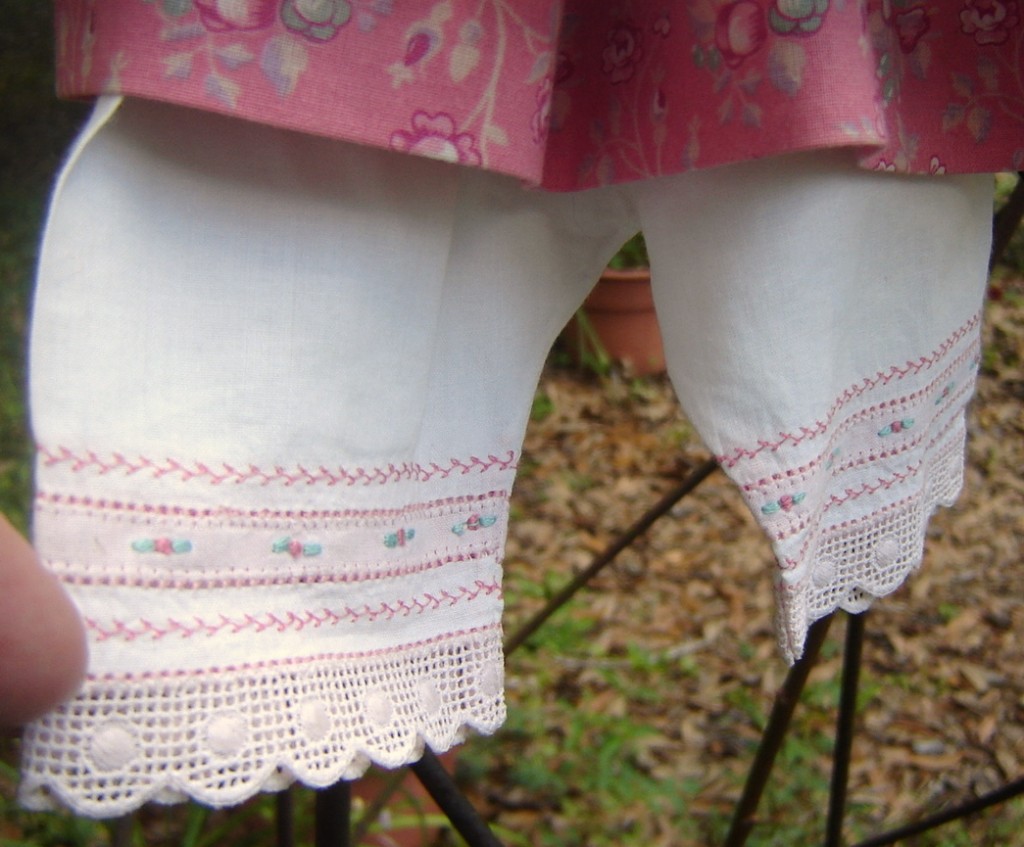Some time ago, Mildred Turner and I did a series of doll dressing schools around the country. Each student adopted a 20″ porcelain doll, made by my mother, and proceeded to spend 4 days making a wardrobe. Garments included an heirloom sewn dress–always Mildred’s assignment, a bishop dress and/or nightgown–my assignment, and undergarments, or “unmentionables” we called them.
Each doll came with a biography, much like the American Girls dolls, and the wardrobe reflected the lifestyle and time of the porcelain character. In Atlanta, we dressed Melanie, a 20th century Southern Belle. In North Carolina we dressed Millie Lavonia, modeled after Mildred Lavonia Medford Turner herself.

Another time it was a fictional mountain girl, Daisy Renee, named for country flowers and the daughter of Capitol Imports vice president. The Mary Elizabeth doll was my Glenwood home town gal, said to have lived the life of Miss Alice’s sister, circa 1915.
This dress, smocked pinafore, pantaloons and a slip were made for one of these dolls, though just which one I cannot recall.
The dress is cotton calico, with 1/4″ tucks in the skirt. The fabric for the pinafore, pantaloons and slip is domestic cotton batiste. Except for the dress itself, candy pink lace tape is applied to the underside of the batiste on each of the other pieces. In the manner of shadow appliqué, the pink shadows through the white batiste. It is pin stitched in place with a sz. 70 needle with 80 wt. Madeira Cotona thread.
The goals of our “schools” included teaching techniques as well as just making a doll wardrobe. In every class I have ever taught, with regard to hemstitching, there is pervasive confusion about the nature and uses of machine made entredeux and the pin stitch. Constructing and hemstitching this garment made the differences clear to those students.
First, as mentioned in yesterday’s post, the hemstitching was not done with a wing needle, as is usually the case. To make the hole size proportional to a doll dress, a sz. 70 was used.
If you look carefully at the photo comparing the wing needle pin stitch on Laurel’s Easter dress with the pin stitch on the doll pinafore, you can see the difference between the size of the two pin stitchs. You can also see how much heavier machine made entredeux is than pin stitch.
The doll pinafore uses both the pinstitch and the entredeux stitch. The top edge of the sleeve, hemline and vertical rows of lace tape are all pinstitched. That stitch does no more than repeat a forward and backward straight stitch 2 to 4 times, depending on your machine, and then makes a horizontal “reach” stitch into the lace tape. Approximately 9 stitches are needed to create each hole. You cannot cut away the fabric next to is as you can with entredeux.
At the bottom edge of the lace tape, where it joins the pink Swiss edging, a line of entredeux is stitched, again with the 70 needle. If you imagine a clock, this pattern of this stitch can be described as much like a clock face. The hole is the center, where the hands are anchored. Stitches reach from some of the numbers back to the center and then outward again. It takes at least 13 stitches to create a hole of entredeux, so it is heavier. This pattern of stitches creates a hole with an edge that can be cut clean against, to which lace or other trims can be joined in the same manner as commercially made entredeux.
I’ve been thinking about doll clothes a lot lately, as I prepare to make some for Laurel’s American Girls Molly doll. I had planned to give the doll to her last Christmas, but decided against it as she was far below the recommended age. But she will be six in a few weeks so I’ve decided to go ahead and gift her the doll and some clothes.
These grandchildren birthdays are coming around way too quickly for my taste.







5 responses to “Pretty in Pink”